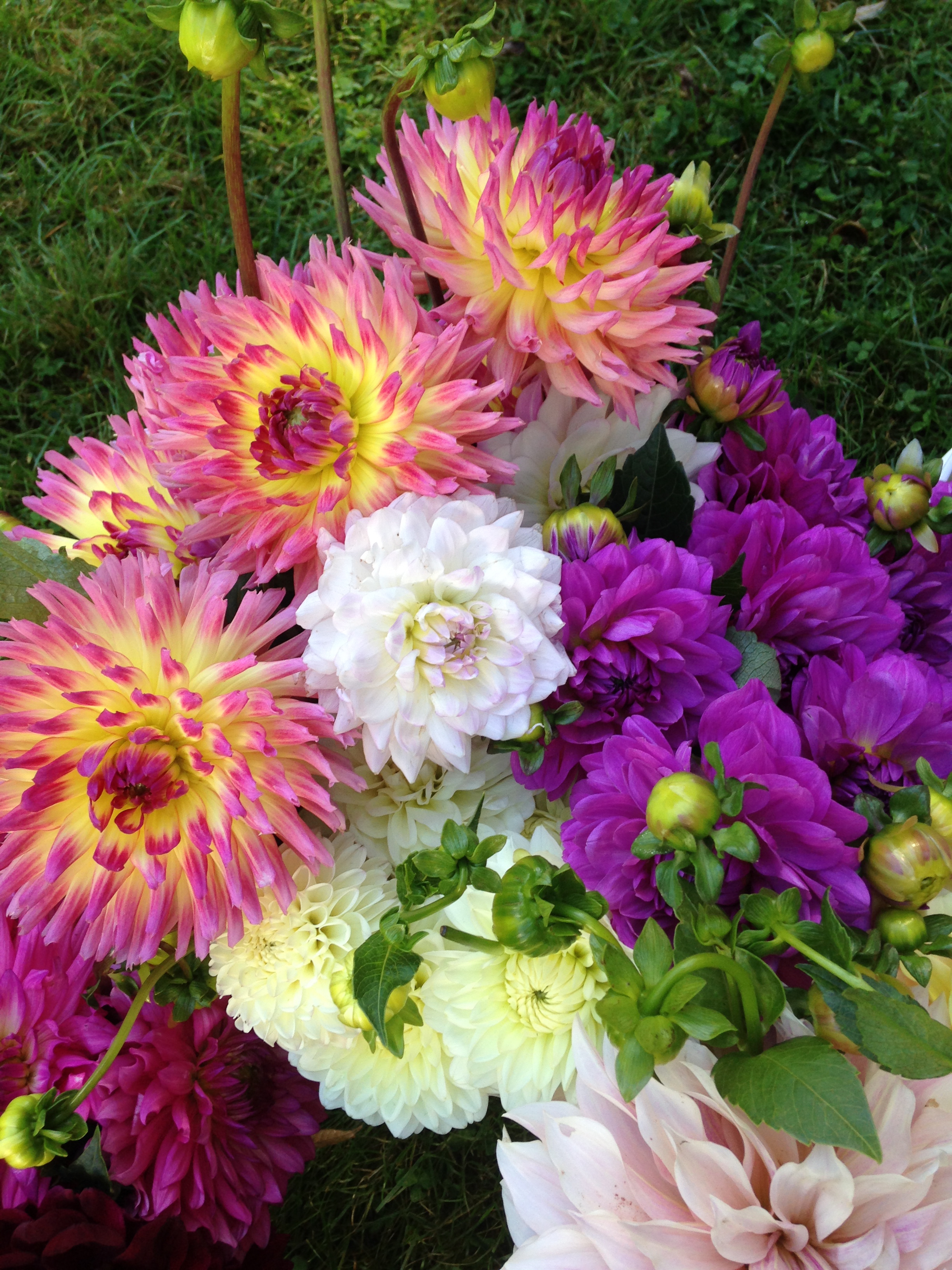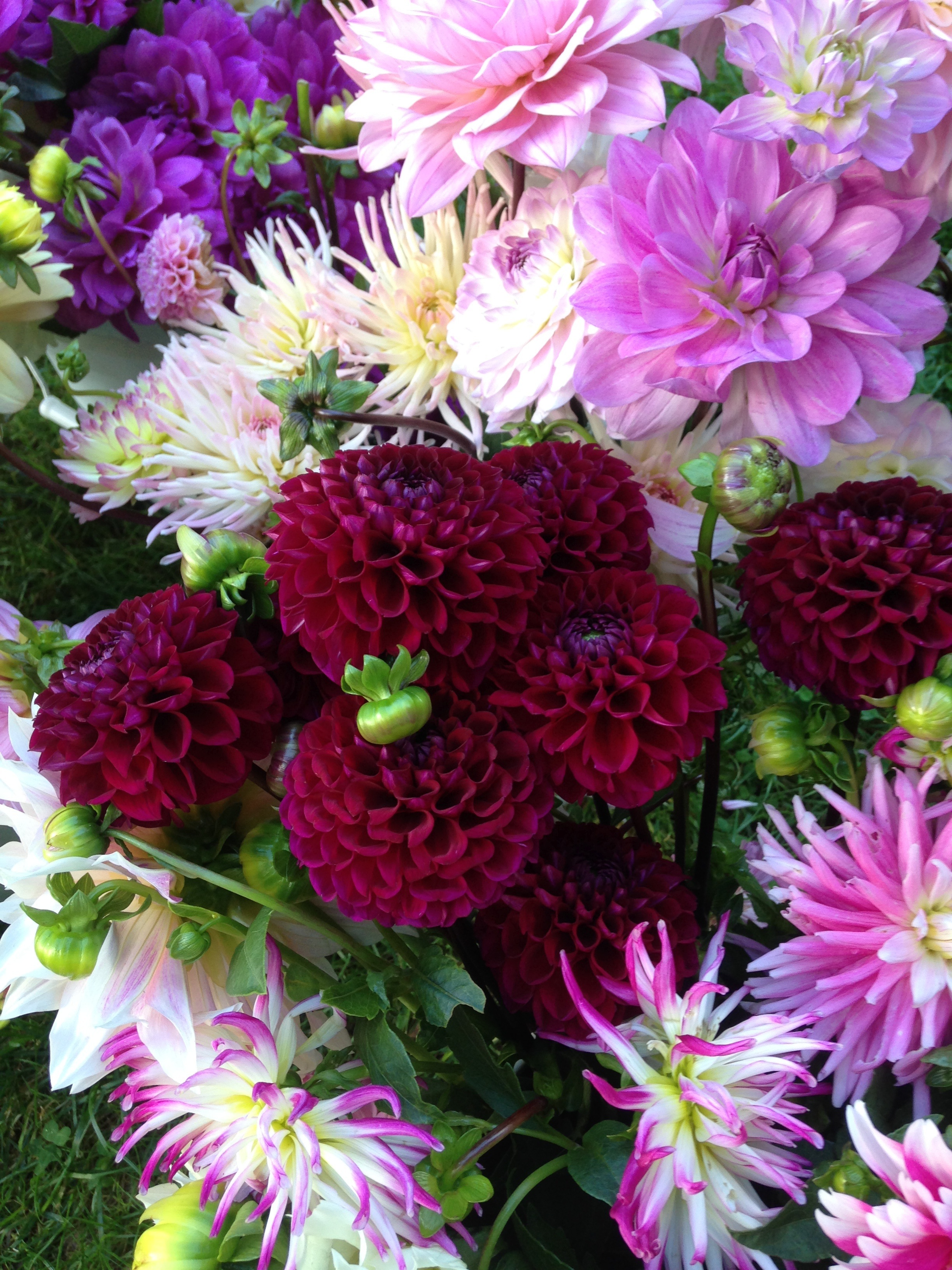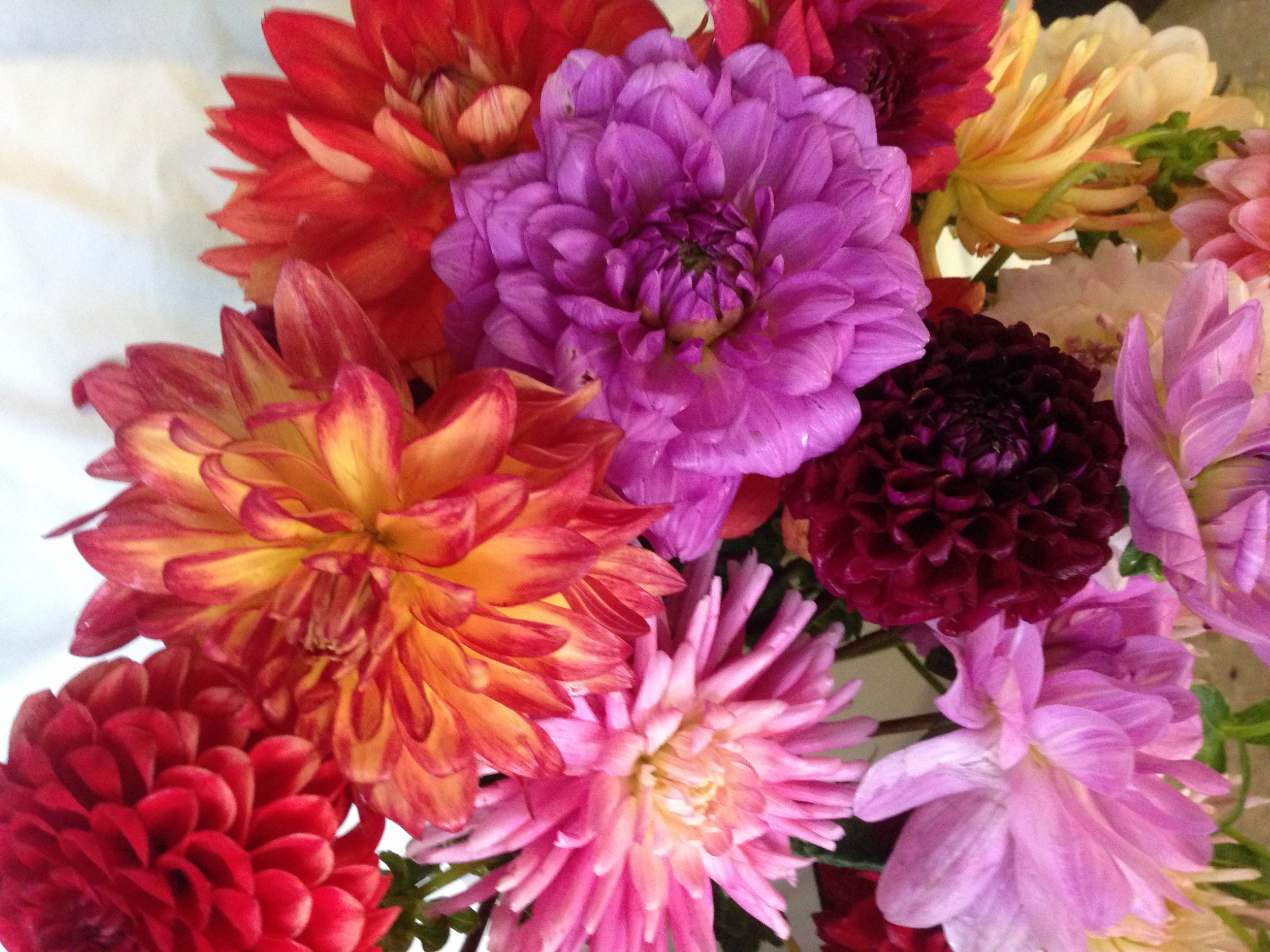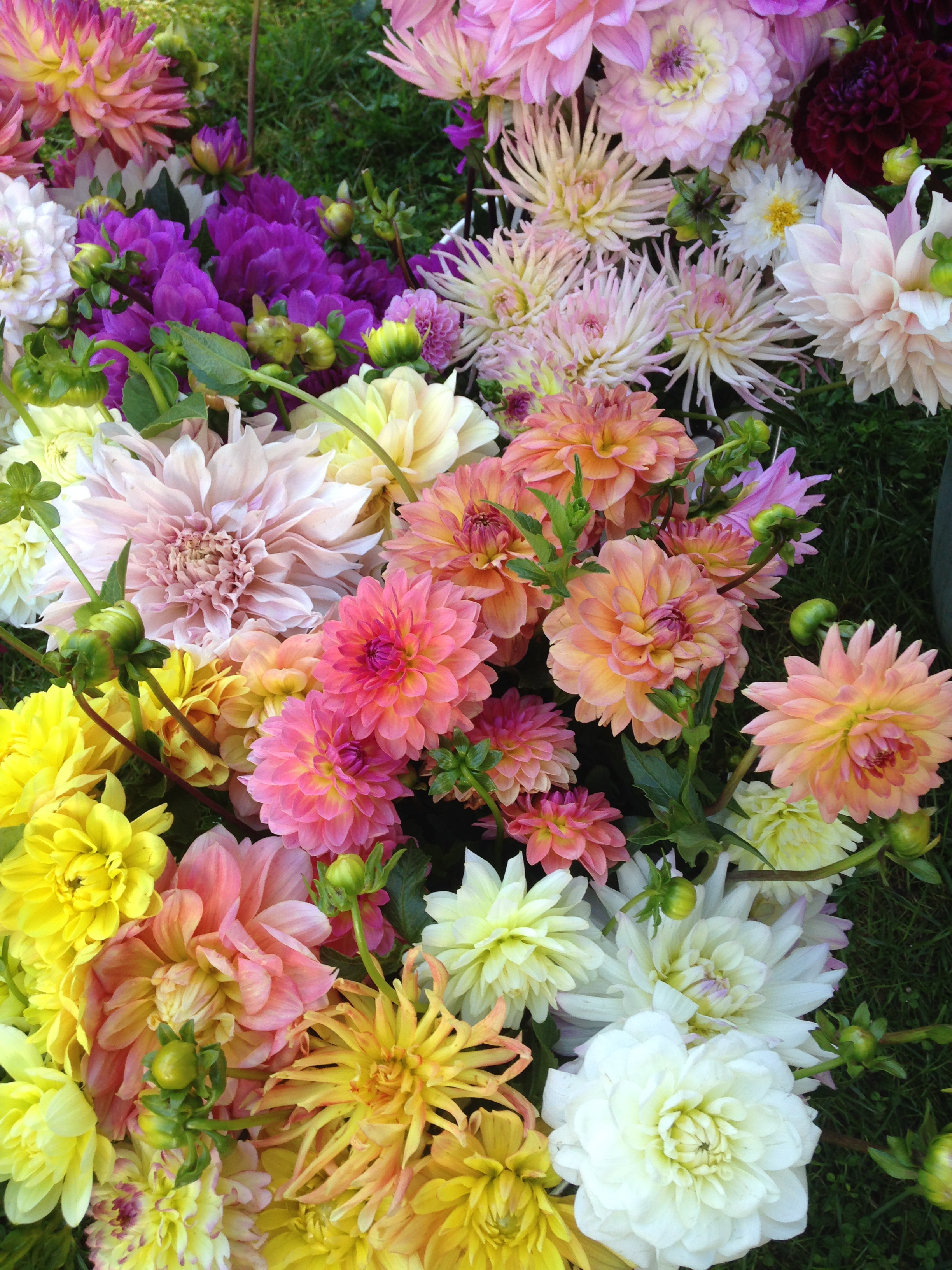How well do your dahlias multi-task?
Are your dahlias good multi-taskers? Of course they are! Look at what they are doing above soil level -- lots of great foliage coming out and flower buds on the "to do" list. Now consider what is happening below soil level -- roots, roots, roots... Yes, your dahlias are GREAT at multi-tasking.
As a flower farmer, I want this multi-tasking to continue SORT OF. From now until frost I get a lot of requests for dahlia FLOWERS but not so many requests for "roots". As a result, I am out pinching my plants to push them into bloom and flower mode. So, what is pinching? It is simply cutting off the tip of the growing shoot. As a result, the plant sends out two new shoots on the sides and just below this pinch point, and starts to put more interest in leaf and flower growth. Hurray. Success. In all actuality, the plant would get to the bloom stage without my doing a thing, but this gives me two potential flower stems instead of one at a low point on the main stalk. This helps ensure good sturdy flower stems as well. So, here at Butternut Gardens LLC, "Operation Dahlia Flower Production" is on the front burner and it won't be long now until you can pick up some amazing dahlia blooms here at The Little White Flower Cottage or at one of my wholesale customers. Why not give your dahlia plants a pinch as well?

















